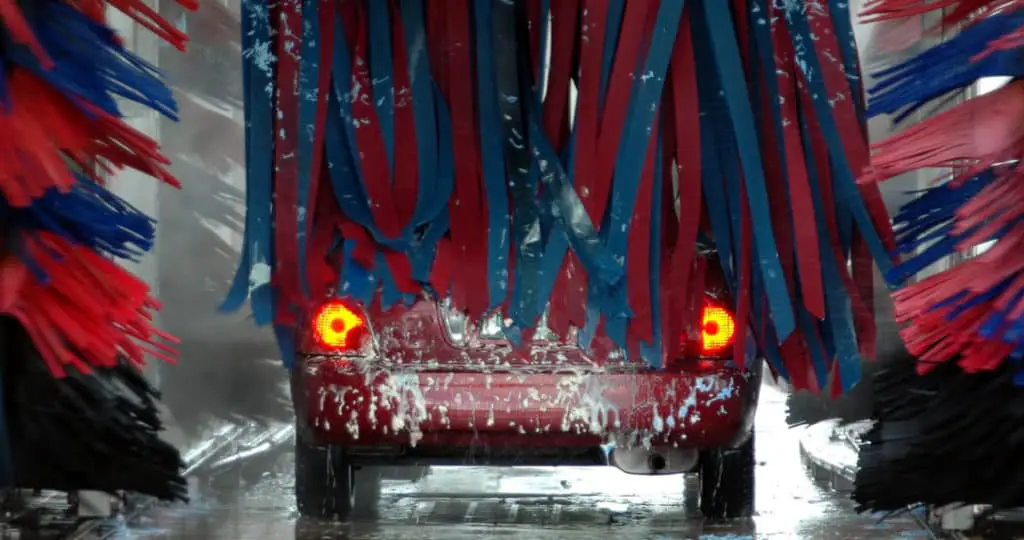Last Updated on January 21, 2025 by Nate Schnell
Scratches on black plastic bumpers are not only unsightly but can also devalue your vehicle. Fortunately, most minor to moderate scratches can be fixed with the right approach, tools, and products. While it may not always be possible to restore your bumper to its original factory condition, you can greatly enhance its appearance and protect it from further damage. This guide will walk you through a detailed, step-by-step process to remove scratches, smooth out the surface, and protect your bumper for the long term.
Understanding Plastic Bumper Scratches
Before diving into the repair process, it’s important to assess the extent of the damage. Minor scratches that affect only the surface of the bumper can typically be repaired with some light sanding, polishing, and the application of a trim restorer. Deeper scratches or gouges, however, may require more intensive methods or even professional intervention. In cases of extensive damage, replacing the bumper may be the most practical option. This guide focuses on minor to moderate scratches that can be addressed at home.
How to Remove Scratches from Black Plastic Bumpers
Clean the bumpers thoroughly. Start by washing the entire vehicle, paying special attention to the bumpers. Use a high-quality car shampoo and a microfiber cloth or wash mitt to remove dirt, grime, and debris. Washing your car prevents any particles from causing additional scratches during the repair process. Make sure the bumper is completely dry before proceeding.
Prepare the damaged area by sanding. Use sandpaper to gently smooth out the scratches and surrounding areas. Begin with a coarser grit, such as 80 or 150, and gradually move to finer grits, such as 180 or 220, to achieve a smooth surface. Focus only on the scratched area and avoid over-sanding, which could create more noticeable imperfections. Clean off any dust or debris with a microfiber towel after sanding.
Remove contaminants with an all-purpose cleaner or degreaser. Spray a high-quality cleaner onto the surface and use a soft brush or cloth to lift any remaining residue. Removing contaminants ensures better adhesion of the trim restorer and prevents streaking or uneven application. Wipe the area clean and allow it to dry completely.
Apply a plastic trim restorer. Choose a trusted product designed specifically for black plastic bumpers. Follow the manufacturer’s instructions carefully, applying the restorer evenly over the scratched area using a clean microfiber cloth or sponge. Be cautious to avoid overlap onto undamaged sections. If necessary, use masking tape to isolate the repair area.
Polish the surface to blend and even out the finish. After the restorer has dried, use a plastic polish kit to refine the surface further. Apply the polish with a soft applicator pad and buff in circular motions until the area looks smooth and uniform. This step helps remove any visible lines or streaks from the restorer application.
Protect the restored surface. To prevent future scratches and fading, apply a UV-resistant plastic protectant or sealant. This will add a layer of protection against environmental elements such as sunlight, rain, and debris. Regular maintenance with a protectant will keep your bumper looking its best for longer.
Can Simple Scuffs Be Removed?
Yes, simple scuffs and surface-level scratches are generally much easier to remove than deep scratches. For these minor blemishes, you can often use products like rubbing compounds, scratch removers, or even household items like toothpaste. Clean the area, apply the product, and buff with a microfiber cloth to restore the finish. Simple scuffs rarely require sanding or a restorer.
Using a Heat Gun for Plastic Repair
A heat gun can be an effective tool for repairing black plastic bumpers with light scratches. The heat softens the plastic, making it easier to manipulate and smooth out imperfections. Be cautious not to overheat the surface, as this can cause warping or discoloration. Always follow up with sanding and polishing to refine the repair.
Can Toothpaste Remove Scratches from Plastic?
Toothpaste can be a surprisingly effective solution for removing very light scratches from plastic surfaces. Its mild abrasive properties help smooth out imperfections. Apply a small amount of toothpaste to a damp cloth, rub it into the scratched area using circular motions, and then wipe clean with a microfiber cloth. Keep in mind that this method is best suited for minor surface scratches and may not work on deeper damage.
How to Remove Paint Marks from Plastic Bumpers
If paint marks from another vehicle or object are present on your bumper, they can often be removed with a plastic-safe solvent such as rubbing alcohol, a dedicated automotive paint remover, or a magic eraser. Always test the product on a hidden area first to ensure it won’t damage your bumper.
Should You Replace a Scratched Plastic Bumper?
Deciding whether to replace or repair a scratched plastic bumper depends on the severity and extent of the damage. For minor scratches and scuffs, repair is typically sufficient and cost-effective. If the bumper has deep gouges, widespread damage, or structural issues, replacement may be the better option. Assess the cost and effort of repair against the expense of a new bumper to make an informed decision.
Final Thoughts
Restoring scratches on black plastic bumpers is a skill that can save you money and enhance your vehicle’s appearance. By following this guide, you’ll be able to address most minor and moderate scratches effectively. Remember that proper preparation, the right tools, and quality products are key to achieving the best results. Regular maintenance and protection will also help keep your bumper looking great for years to come. If you encounter severe damage or are unsure about the repair process, don’t hesitate to consult a professional.



